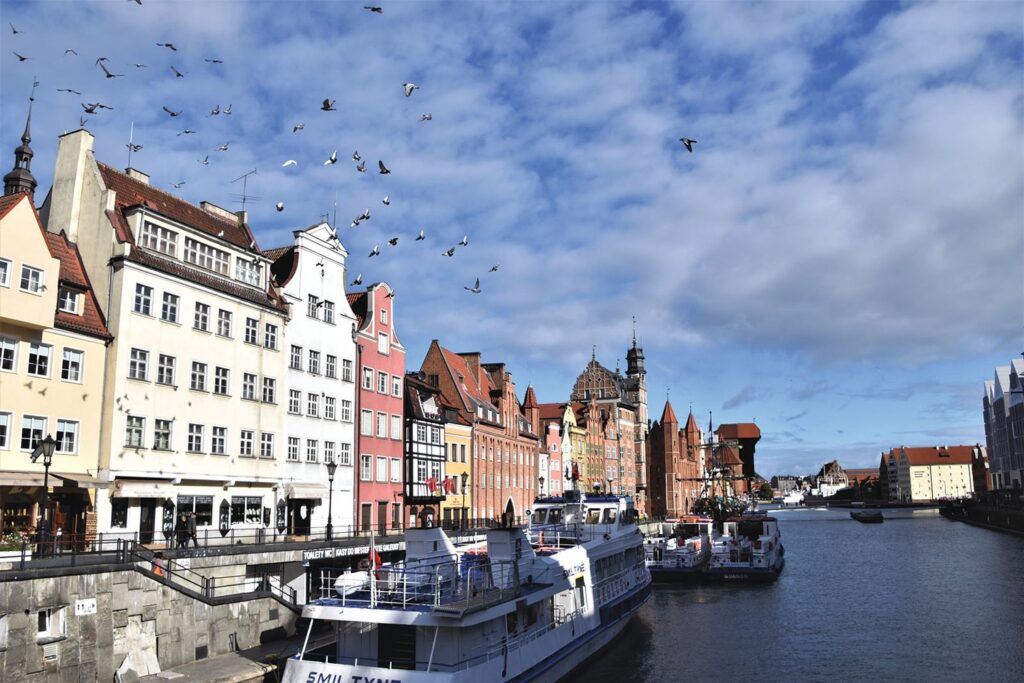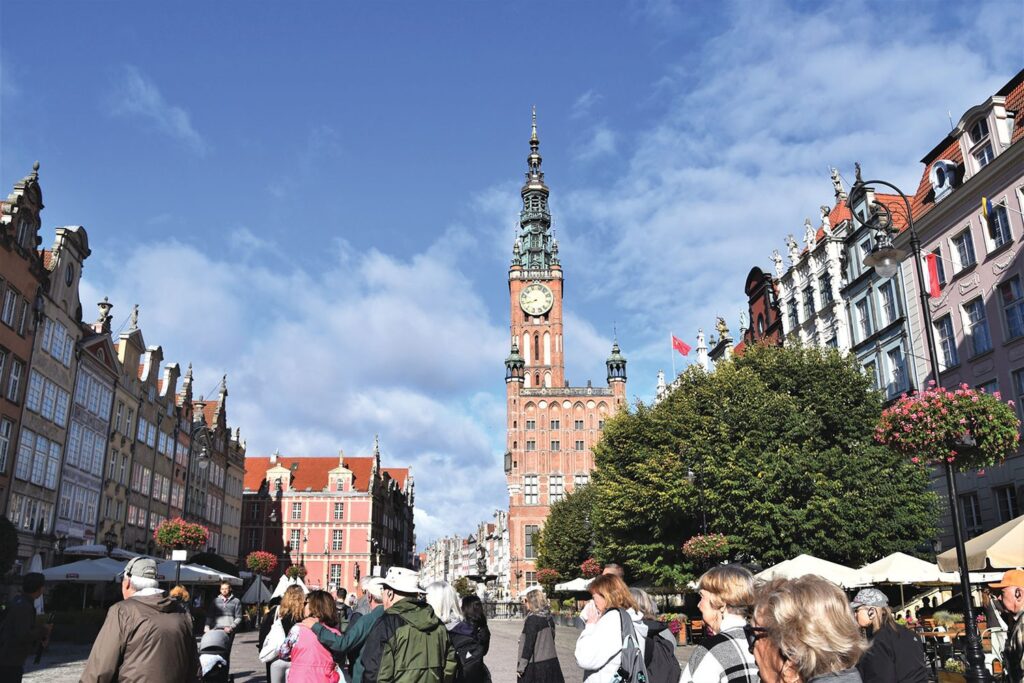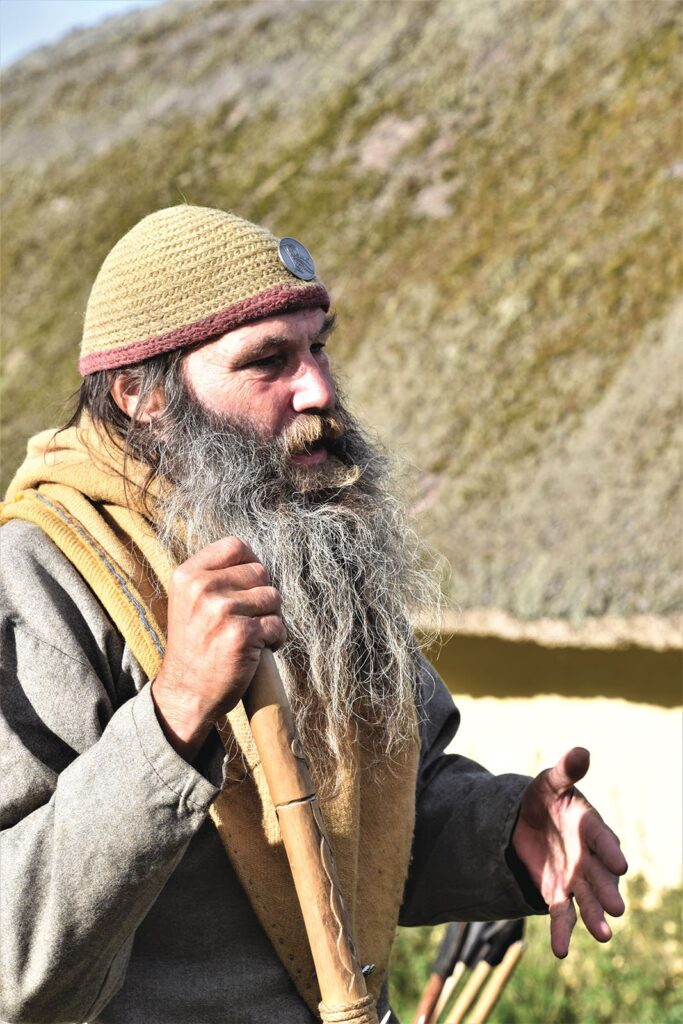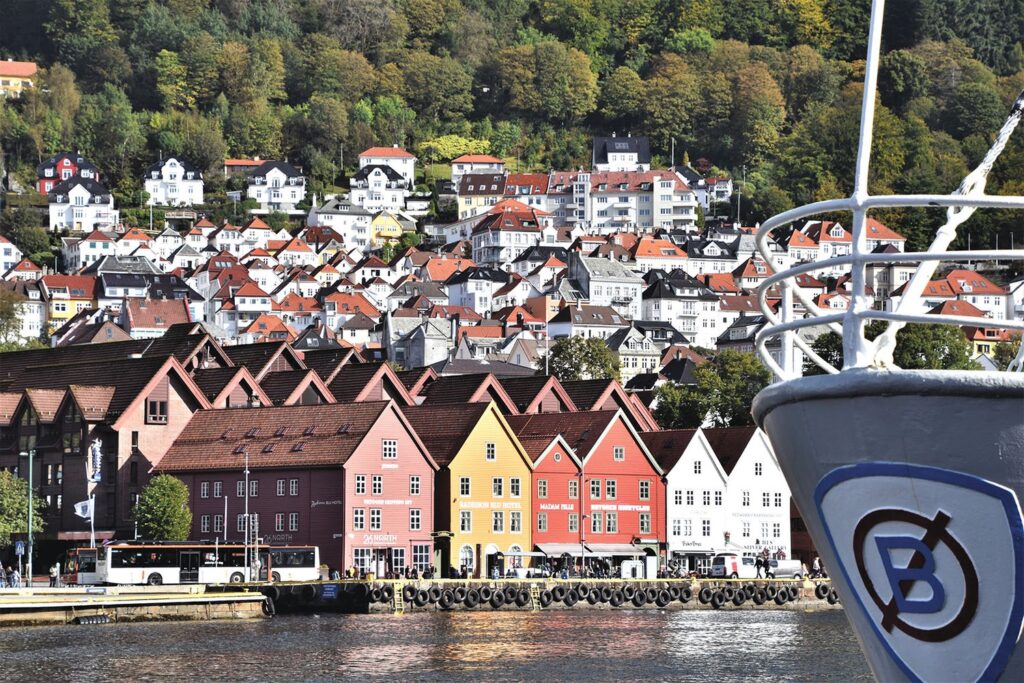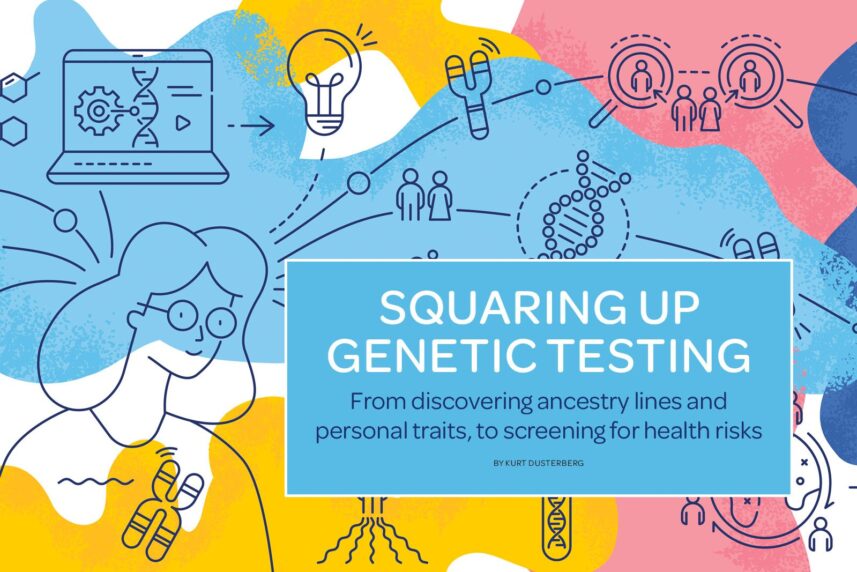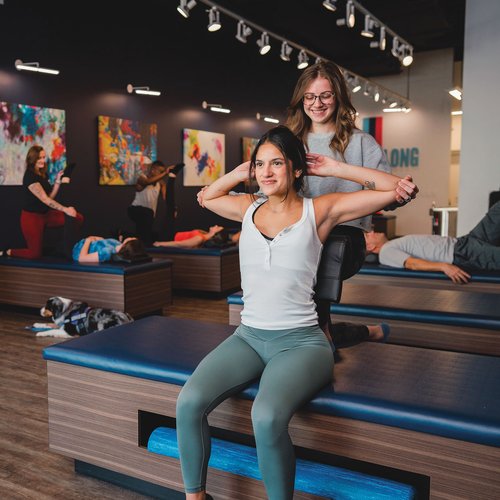Article:
When you hear the term “genetic testing,” what comes to mind?
For some, it means learning about their ancestry. For others, it’s the key to a healthy pregnancy. And then there are those who rely on the data to discover their risk of cancer. The applications of genetic testing vary from satisfying your curiosity to understanding how your DNA can prepare you and your family to confront serious medical conditions. The key is knowing what various DNA testing providers have to offer.
Anyone interested in learning where their ancestors came from and what kinds of personal traits they have inherited can tap into services like AncestryDNA and 23andMe. While those resources can provide some medical insights, they should not be confused with clinical work such as prenatal/newborn screening, diagnostic testing and carrier testing. These procedures can influence a person’s choices about health care and the risk, management and treatment of disorders.
Prenatal and Newborn
Emily Hardisty, MS, CGC, is a clinical professor and coordinator of genetic counseling services with the University of North Carolina Department of Obstetrics & Gynecology. She works with women and families who are pregnant or planning a family to determine what genetic testing may or may not be appropriate based on their needs and values. Screening for cystic fibrosis, spinal muscular atrophy and inherited hemoglobinopathies, such as sickle cell disease, are universally recommended.
“Diagnosing in pregnancy doesn’t lead to any treatment or cure, but it is information that can give the family time to wrap their mind around what is going on and have some time to adjust during the pregnancy so that they can be better prepared at delivery,” she says.
Most of the testing to determine risk of a pregnancy involving a physical or genetic difference present at birth involves a combination of blood tests and procedures that require a sample from inside the uterus. In general, such cases are limited to 2%–3% of pregnancies. “The American College of Obstetricians and Gynecologists recommends that all pregnant people be offered carrier screening to see if they are carriers for certain recessive genetic conditions, that if both parents are carriers, would indicate a risk to the pregnancy,” Hardisty says. “It also recommends that all pregnant people should be offered the option of screening in pregnancy to evaluate for the risk of Down syndrome and other chromosome differences.”
Hereditary Cancers
Cancer detection also relies on genetic screening. Dr. Lisa Roberts, MD, is a gynecologist and the medical director of the Hereditary Care Center in Raleigh. Her practice provides risk assessment, genetic counseling and genetic testing for patients who have high-risk factors for inherited genetic mutations associated with cancers. The most common of the cancers are breast, ovarian, uterine, colon, stomach, prostate, melanoma, renal, thyroid and lung.
The screenings can be helpful to people who have a family member with a genetic disorder, but no features of the disorder themselves at the time of testing. “When we’re seeing a patient for a routine visit or even a new patient with a problem visit, family histories become a very important part of the screening questions,” says Roberts, who has offered the genetic counseling services for 10 years. “It can not only help that patient understand their own risk, but if we do identify their risk is elevated for certain cancers, we can be much more proactive in offering increased surveillance to try and catch cancers earlier. Potentially the treatment involved could be less involved and extensive.”
She points out that the presence of a mutation means only that the person has an increased risk of developing cancer, compared to the risk relative to the general population. The knowledge from the risk assessment, regardless of the outcome, can serve a positive purpose. “It’s all about empowering yourself with information,” Roberts says. “That might be the game-changer for somebody to decide: I’m going to start eating a healthy diet, get rid of the processed food, start exercising. Just simple things that can make a big difference in somebody’s life, not just with cancer risk.”
To Test, or Not to Test
Genetic testing is not recommended for everyone. Only those with a pressing medical concern should seek a professional assessment. “Potentially, we can test for many, many things. Dealing with that amount of information is overwhelming sometimes, and some people respond with a lot of stress and worry,” Hardisty says. “Absolutely, if someone has a concern about something that is in their family—whether that’s going to be impactful to their health or their future pregnancies—they really should request a referral to a genetic counselor or another genetic professional who can assist them with navigating what testing is most appropriate for them.”
For cancer screenings, Roberts agrees that there should be a medical concern before seeking testing. For example, she recommends a screening for anybody with a first-degree relative under the age of 50 who has breast cancer. “The average person doesn’t need to get a consultation if they don’t have a family history,” she says. “If you have several cancers, or rare cancers like pancreatic and ovarian, you should get tested.”
For many years, genetic testing was expensive and limited in scope. Today, it is far more affordable and often covered by health insurance plans. “The cost of testing has dropped dramatically over the last 10 years,” Roberts says. “When we first started out, the charge patients were seeing on their insurance explanation benefits was as high as $3,000 or $4,000. That same lab is now offering a more extensive panel of 48 genes for $249.”
Hardisty has seen similar improvements in her 20 years of counseling. “When I started, we had a few methods for screening for Down syndrome and other chromosome differences, and we could do single-gene carrier testing,” she says. “But genetic testing was much more expensive and less affordable than it is now. The idea of being able to test for 500-plus conditions at the same time, affordably, was incredibly foreign at the time. Testing for one gene would have been thousands of dollars.”
If you’d like to locate a genetic counselor near you, visit findageneticcounselor.nsgc.org. For more information about hereditary cancers, visit hereditarycarecenter.com and click on “Family History Tool.”
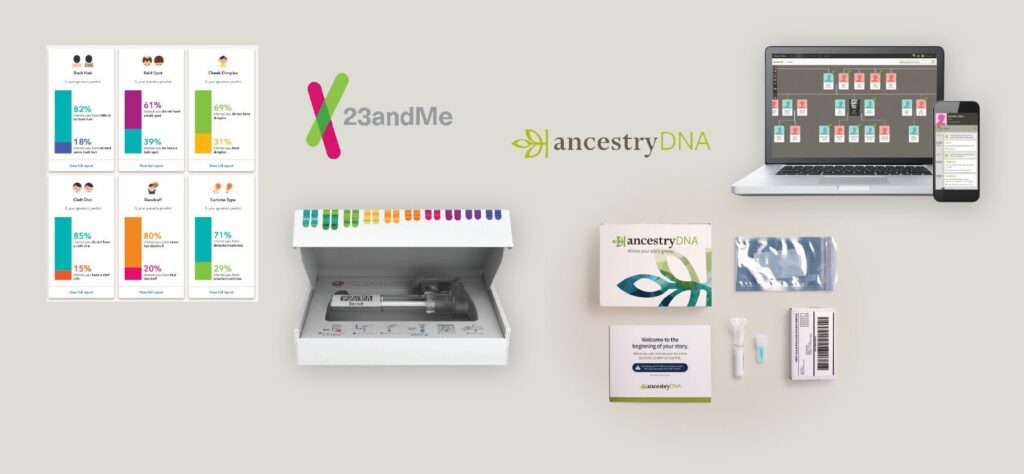
The Lighter Side of DNA
By Kurt Dusterberg
Genetic testing has a variety of applications, but it is important to understand the difference between testing for genetic mutations and participating in direct-to-consumer DNA tests, such as those offered by 23andMe and AncestryDNA.
Professional genetic counseling services provide insights into specific health conditions and risks, while at-home genetic tests reveal a broad range of health, ancestry and lifestyle information. The at-home kits typically cost between $59 and $350 and require nothing more than a saliva sample to start the process. According to a 2019 Pew Research Center survey, close to 15% of adults in the U.S. have used a mail-in service.
With more than 13 million customers, 23andMe supplies two types of reports: an ancestry profile of DNA lineage with other bits of family history, and an individual health report that includes insights into health predispositions, carrier status traits, wellness and ancestry.
“Our Customer Care team is on hand to support our customers with inquiries about surprising results,” says 23andMe Vice President of Research Joyce Tung, Ph.D. “These individuals undergo extensive, months-long training and are highly trained in interpreting the product—both health and ancestry reports—and [they] speak with customers about their possibly life-changing genetic results,” she says. “However, it’s also important to note that we recommend that anyone who receives a positive result or has questions about their results should visit a health care provider for further consultation and confirmatory testing.”
AncestryDNA, with more than 18 million profiles in its database, focuses specifically on estimating genetic ethnicity and finding family connections through a list of DNA matches. The service also uses chromosome markers to suggest whether someone is prone to dozens of specific traits, such as sun sneezing and hair thickness. The revelations are ideal for curiosity seekers. “After my daughter and I linked our Ancestry.com accounts together, I was very surprised about my lifelong notion that I was introverted,” says Liz Neely, who visits her Apex-based daughter regularly. “The extroverted trait proved to be a big surprise. Another shocker was that I’m inclined to be a risk taker. This one truly made me take notice. My daughter and I spent quality time comparing our similar and opposite genes. It was an exciting evening.”
Genealogy-Inspired Travels
By Marilyn Jones
I walked along Postgatan Street from Gothenburg Central Station toward the waterfront in Gothenburg, Sweden. Through an arcade lined with cafes and shops, across busy intersections and along cobblestoned streets, I strolled along—taking in my surroundings, trying to pick out what might have been here in 1885 when my great-grandmother emigrated to America and made this walk as a 19-year-old on her own.
I have been fascinated with my heritage since meeting Paul Blomquist, a Swedish cousin, when I was 12 years old. Over the years, I heard about Johanna Mathilda Johansdotter and her future husband—my great-grandfather, Carl August Hammerlund—and how they emigrated to America.
Several relatives, especially Karen Hammerlund Lukas, who wrote the book “Field of Stones: A Peasant Family’s Journey From Sweden to America,” aided me in my desire to learn about my ancestors. My research took me along different avenues as I studied other Swedish relatives I discovered via my Ancestry.com account. I also uncovered Viking ancestors.
I went a step further by having my DNA tested. Many companies are providing this service. I chose 23andMe. In addition to physical descriptions and medical predictions, I learned about my heritage.
I wasn’t surprised to learn that I have 45.2% British and Irish ancestry. My Scandinavian ancestry was specifically Swedish, at 30.9%. Broadly, northwestern European was a 14% match and Switzerland was an 8.8% match. Each entry is broken down into finer points, leaving little to decipher in the report.
My goal was always to visit Sweden, because I knew the most about this faction of my family. I chose to explore Scandinavia, where my not-so-distant relatives once lived—and still do—by sailing with Viking Cruises via its Viking Homelands itinerary. Stops included Sweden, Finland, Norway, Denmark, Germany and Poland.
I met my cousin, Jenny Blomquist, her partner, Timmy, and their infant son, Sam, in Stockholm for lunch and a tour of Old Town. We talked about family and how our ancestors were sisters—hers staying in Sweden, mine emigrating to America. And here we were, more than a century later, connecting as only relatives can.
My journey also led to a better understanding of the Vikings, those Scandinavian seafaring warriors who raided and colonized vast areas of Europe from the 9th through 11th centuries. While in Aalborg, Denmark, I visited a reconstructed Viking farm on the outskirts of Fyrkat, the hometown of Viking King Harald “Bluetooth” Gormsson. My guide, dressed in Viking gear, explained that pagan Danish, Norwegian and Swedish warriors undertook these raids because of a combination of factors, ranging from overpopulation at home to the relative helplessness of victims abroad. Their existence profoundly affected European history. These organized bands of warriors would negotiate the seas in their longships and hit-and-run mount raids at cities and towns along the coasts of Europe. On land, they were independent farmers, but at sea, they were raiders and pillagers.
Nearby is the Fyrkat Viking Fortress, built by King Harald “Bluetooth” Gormsson in 980 A.D. It is said to be one of the oldest ring fortresses in Denmark. A fifth exists in Sweden. Inside the rampart, the locations of houses and roads marked in white offer a visual of what was there centuries ago.
Our last stop was Lindholm Hoje, an ancient burial site with more than 700 gravesites. Inside the nearby museum, artifacts discovered at an archeological site conveyed the lives of its Viking inhabitants. Villagers used the cemetery from approximately 400 to 1000 A.D. It was preserved by shifting sands that covered the hills, and was discovered in the 1950s.
On a lovely cruise in the Baltic and North Seas, I found a little of myself in Scandinavia’s land, people and history. Learn more about Viking’s Homeland cruises at vikingcruises.com.
